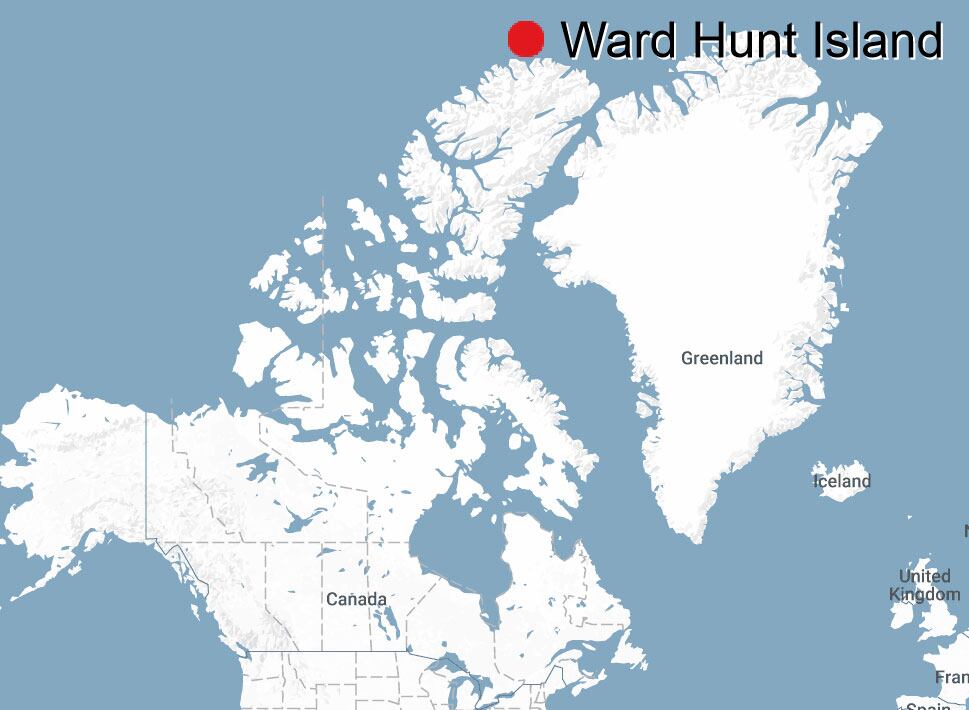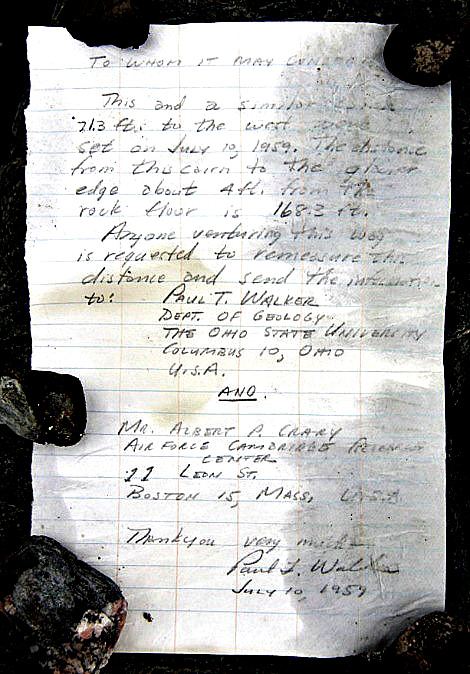Environmental Message In A Bottle
Ward Hunt Island expedition, 1959 (credit: Wikicommons)
You've read stories about someone stranded on a desert island who tosses a bottle in the ocean with a message hoping to be rescued. It is not obvious that a similar bottled message might alert the future about the past about climate change in the Arctic.
In 1959, two Canadian researchers, Albert Crary and Paul Walker, were on an expedition to explore Ward Hunt Island off the northern coast of Ellesmere Island high in the Arctic. They finished their glacial measurements, built a rock cairn, wrote a note describing the environmental conditions they had observed there, and placed the message in a bottle with instructions for anyone who found it in the future. They asked any future discoverer to record changes they saw and mail any new measurements to designated addresses.


Ward Hunt Island map (credit: Wikicommons) and 1959 Arctic message (Laval University, Canada)
It would be more than 60 years before the rock cairn was visited again, the protected message located, and changes to the glaciated landscape reviewed. The letter was re-discovered by a Canadian research team led a biologist at Laval University Quebec. In the intervening years, Ward Hunt's glacier had receded more than 325 feet. The original glaciologists had anticipated climate change well before the term was became widely known or the impacts recognized.
Before the 1960's, few people thought of climate change and the stories ice might catalog the past, the present, or the future. The original young 20th Century explorers, who left their bottled message, provided a prescient warning for what was to come in the 21st. WHB